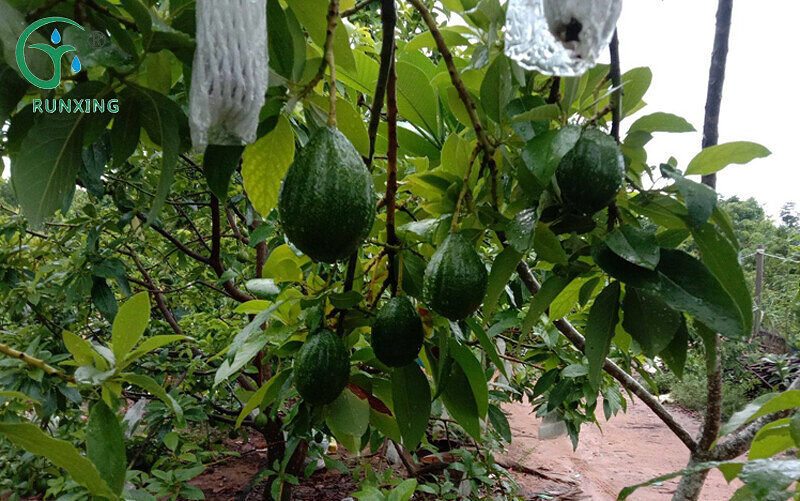Avocado Cultivation in South America and Drip Irrigation Systems
In South America, the avocado (also known as the butter fruit) is a fruit with extremely high economic value. Due to the specificity of its growing environment, especially in arid and semi-arid regions, a reasonable irrigation system is crucial for ensuring the healthy growth and high yield of avocados. This article will focus on whether drip irrigation is necessary for avocado cultivation, as well as the required drip irrigation equipment, installation methods, and cultivation techniques.

I. Is Drip Irrigation Necessary for Avocado Cultivation?
The answer is yes. Drip irrigation is an efficient water-saving irrigation method, particularly suitable for crops like avocados that require stable and moderate amounts of water. In many regions of South America, water resources are relatively scarce. Therefore, drip irrigation systems not only meet the water needs of avocados but also significantly reduce water wastage.
II. Required Drip Irrigation Equipment and Installation Methods
Drip Irrigation Equipment
Water Source: Provides a stable and clean water supply, ensuring that the water quality meets irrigation requirements.
Headworks System: Includes pumps, filtration systems, pressure regulators, valves, etc., responsible for processing and delivering irrigation water.
Water Distribution Network: Composed of water transmission pipelines, distribution pipelines, and control equipment, it transports the treated water to the roots of the crops.
Drippers: Slowly drip water into the soil at a stable low flow rate. Drippers are usually made of plastic by die-casting and are classified into pressure-compensating and non-pressure-compensating types, selected based on the laying distance and terrain.
Installation Methods
Surveying and Setting Out: Use surveying equipment such as levels or total stations to ensure the accuracy of the setting-out lines and avoid obstructions.
Pipe Trench Excavation: Excavate pipe trenches according to the setting-out positions and promptly address any potential collapses.
Headworks System Installation: Install pumps, filtration systems, power distribution equipment, etc., to ensure the safe and efficient operation of the system.
Main and Branch Pipe Installation: Use PVC or PE pipes, installed strictly according to construction requirements, ensuring secure connections and using anchors for fixation.
Drip Irrigation Tube (Tape) Laying: Lay the drip irrigation tube or tape near the crop roots, with the outlets facing upwards to ensure uniform water distribution into the soil.
III. Avocado Cultivation Techniques
Soil Management
Avocados prefer well-drained and fertile soil. After planting, leguminous plants with butterfly-shaped flowers, such as peanuts or green manure, should be planted between the rows to suppress weed growth while also expanding holes, loosening soil, and removing weeds.
Fertilization Management
Young trees should be fertilized lightly but frequently, with a focus on nitrogen and potassium fertilizers, supplemented with phosphorus and organic fertilizers. As the trees age, the frequency and amount of fertilization should be appropriately reduced, but the proportion of organic fertilizers should be increased.
Pruning Management
Shaping young trees is important, involving timely removal of overgrown branches, horizontal branches, weak and diseased branches, and dead branches. For fruit-bearing trees, pruning should be light, focusing on removing diseased and insect-infested branches, drooping weak branches, and improving canopy ventilation and light penetration.
Pest and Disease Control
Avocados are susceptible to diseases such as anthracnose and cercospora spot. Orchard management should be strengthened, with timely removal of infected branches, leaves, and fruits to reduce infection sources. Additionally, spraying with Bordeaux mixture or other copper-based formulations can be used for prevention and control.
Irrigation Management
After adopting a drip irrigation system, drippers should be regularly checked for clogging to ensure uniform irrigation. At the same time, irrigation amounts and frequencies should be reasonably adjusted based on the avocado growth cycle and weather conditions.

In summary, drip irrigation systems play a vital role in avocado cultivation in South America. Through reasonable selection and installation of drip irrigation equipment, combined with scientific cultivation techniques, avocado trees can be ensured to grow healthily, leading to increased yields and improved quality.
If you have any needs, please contact us.
About Us
We are dedicated to offering innovative, water-saving, and labor-saving irrigation solutions for agriculture worldwide. Our focus on quality and continuous innovation drives the development and progress of the industry

